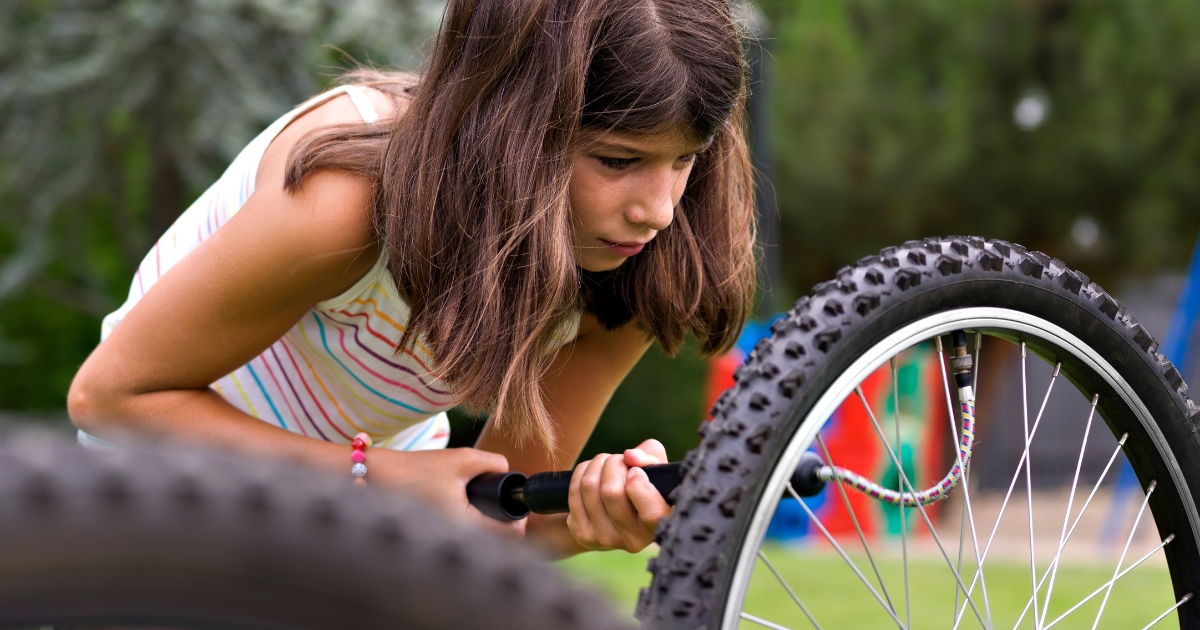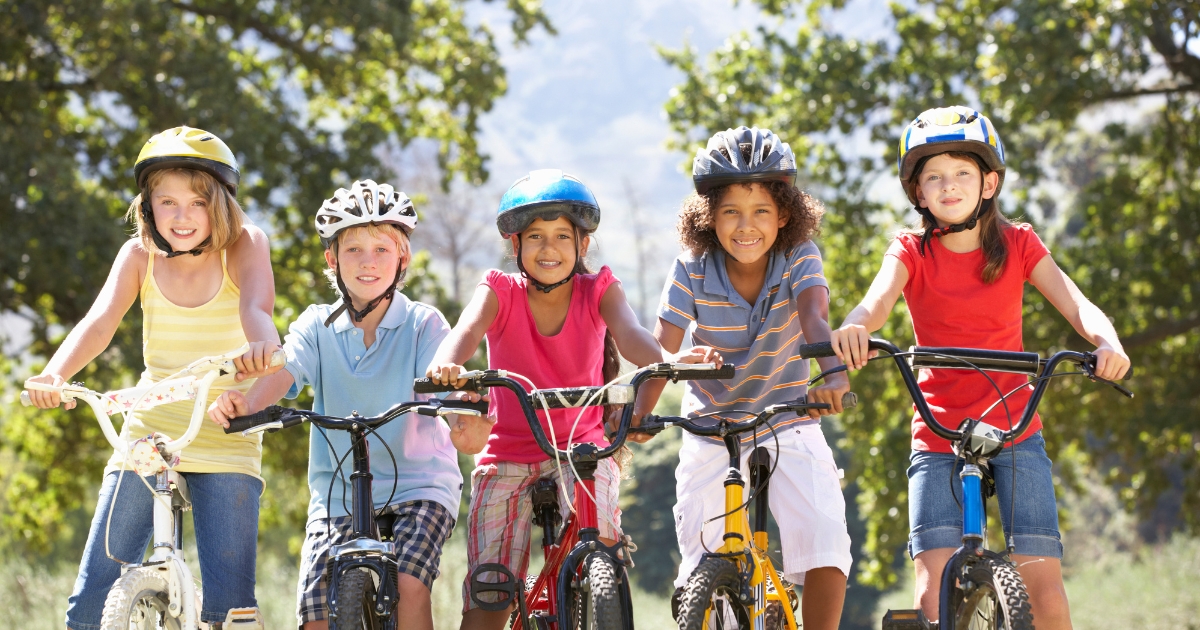Are you looking to inject some excitement and vitality into your homeschool routine? If so, incorporating nature-based physical education might be the perfect solution. Engaging children in outdoor activities not only helps them stay physically fit but also enhances their learning experience in unique and enriching ways.
This blog post explores the various benefits of outdoor physical activities and offers practical ideas on how to weave these adventures into your homeschool curriculum. Get ready to discover how hiking, biking, nature scavenger hunts, and gardening can revolutionize your homeschooling approach!
The Benefits Of Outdoor Physical Activities
The advantages of incorporating outdoor physical activities into your homeschool routine are manifold. Firstly, these activities promote physical fitness by encouraging children to move their bodies and engage in exercise. Whether it’s a brisk hike through a local park or a leisurely bike ride around the neighborhood, these activities help children develop strength, coordination, and cardiovascular health.
Furthermore, outdoor physical education for children provides a refreshing break from the traditional classroom setting. Stepping outside and immersing oneself in nature can reduce stress, improve mood, and enhance overall well-being. The sights, sounds, and smells of the natural world offer a sensory-rich experience that can invigorate the mind and rejuvenate the spirit.
In addition to the physical and mental benefits, bringing learning outdoors offers unique opportunities for hands-on education. Nature serves as a living classroom where children can explore, observe, and interact with their surroundings. From identifying different plant species to studying animal tracks, outdoor adventures provide a wealth of experiential learning experiences that can deepen a child’s understanding of the natural world.
Hiking Adventures, Biking For Fun, Nature Scavenger Hunts, & Gardening As Learning Experiences
Hiking Adventures
Hiking is a fantastic way to incorporate nature-based physical education into your homeschool routine. It benefits both the body and mind by providing a cardiovascular workout and fostering a deeper connection with the environment.
- Choose Local Trails: Select trails that match your children’s age and fitness levels to ensure an enjoyable experience.
- Make It Regular: Aim to include hiking in your weekly plans to build a consistent routine.
- Encourage Observations: During hikes, prompt your children to notice their surroundings. Discuss flora, fauna, ecosystems, and other natural features.
- Use Learning Tools: Bring field guides or apps to identify plants and animals and integrate science lessons like geology or weather patterns.
To keep your hikes exciting, consider themed hikes or nature scavenger hunts. For example:
- Create a list of items—such as leaves, rocks, or animal tracks—for your children to find.
- Tie the theme to a subject you’re teaching, like visiting a historical site if you’re studying history or a location tied to a book you’re reading.
These activities turn hikes into adventures that inspire curiosity and build knowledge.
Biking for Fun
Biking is another fantastic outdoor activity that combines exercise with life skills and learning opportunities. It not only improves physical fitness but also enhances balance, coordination, and endurance.
- Safety First: Equip your children with helmets, knee pads, and other protective gear. Teach road safety rules and good cycling habits.
- Make It Routine: Plan bike rides regularly, either around your neighborhood or through scenic bike trails.
- Teach Maintenance Skills: Show children how to check tire pressure, clean the chain, and make basic repairs to their bike. This builds independence and responsibility.
To make biking even more engaging, plan routes that pass by interesting landmarks like historical sites or nature reserves. Use these stops as springboards for discussions and learning moments. For instance, explore the history behind a landmark or discuss the types of habitats found in a nature reserve. This turns bike rides into holistic adventures that promote both education and physical activity.

Nature Scavenger Hunts
Nature scavenger hunts are exciting ways to blend play, learning, and exploration. They stimulate curiosity and improve observation skills while encouraging physical activity.
- Create a Themed List: Focus on topics like plants, insects, or birds relevant to your homeschool curriculum. You can ask your children to find things like a certain leaf, bug species, or bird feather.
- Provide Tools: Equip your children with magnifying glasses, notebooks, and cameras to document their findings.
- Build a Nature Journal: Ask them to sketch, describe, and record what they found, reinforcing what they’ve learned.
For added depth, encourage your children to research their discoveries and share their findings with family or friends. This enhances confidence while reinforcing the knowledge gained during the activity.
Gardening as a Learning Experience
Gardening offers hands-on learning opportunities while teaching children about plants, ecology, and sustainability.
- Collaborative Garden Design: Plan and design the garden together, discussing which plants to grow and why. Use this as a chance to research and schedule planting times.
- Assign Responsibilities: Give age-appropriate tasks like watering, weeding, and monitoring plant growth, helping children develop responsibility and practical skills.
- Teach Scientific Concepts: Explore topics like photosynthesis, soil health, and pollination. Conduct experiments, such as comparing plant growth in different soils or testing homemade fertilizers.
Gardening is an ongoing project that nurtures valuable skills over time. It provides a sense of accomplishment, reinforces environmental stewardship, and makes learning tangible through real-world experience.
Incorporating Seasonal Activities
One of the joys of bringing learning outdoors is the opportunity to experience the changing seasons firsthand. Each season offers unique opportunities for outdoor physical education and hands-on learning. By incorporating seasonal activities into your homeschool routine, you can keep things fresh and exciting throughout the year.
In the spring, focus on activities such as planting a garden, exploring blooming flowers, and observing the return of migratory birds. Spring is also a great time for nature walks and hikes as the weather becomes milder and the natural world bursts into life.
Summer provides ample opportunities for water-based activities, such as swimming, kayaking, or beachcombing. Take advantage of the long daylight hours to plan extended outdoor adventures, such as camping trips or overnight hikes. Summer is also a great time for stargazing and learning about astronomy.
Fall is perfect for activities such as leaf collecting, apple picking, and exploring the changing colors of the foliage. Take nature walks to observe the preparations animals make for winter and incorporate lessons about hibernation and migration. Fall is also a great time for outdoor art projects, such as leaf rubbing or nature-inspired crafts.
Winter may bring colder temperatures, but it also offers unique opportunities for outdoor fun. Activities such as sledding, ice skating, and building snow forts provide excellent physical exercise. Use the winter landscape to teach lessons about weather patterns, animal adaptations, and the science of snow and ice.
By incorporating seasonal activities into your homeschool routine, you’ll provide your children with a rich and varied learning experience that reflects the natural rhythms of the year.
Nature-Based Physical Education
Integrating nature-based physical education into your homeschool routine offers a wealth of benefits for both you and your children. From promoting physical fitness and mental well-being to providing hands-on learning experiences and fostering a sense of community, outdoor adventures can enrich your homeschool program in countless ways. By incorporating activities such as hiking, biking, nature scavenger hunts, and gardening, you’ll create a dynamic and engaging learning environment that encourages curiosity, exploration, and a deep connection with the natural world. Don’t hesitate to reach out to local homeschooling groups or online communities for support and inspiration. Together, we can create a homeschooling experience that is both educational and deeply fulfilling.
Are you ready to transform your homeschool routine with outdoor adventures? Start planning your next nature-based activity today and watch as your children’s love of learning and the natural world blossoms.



